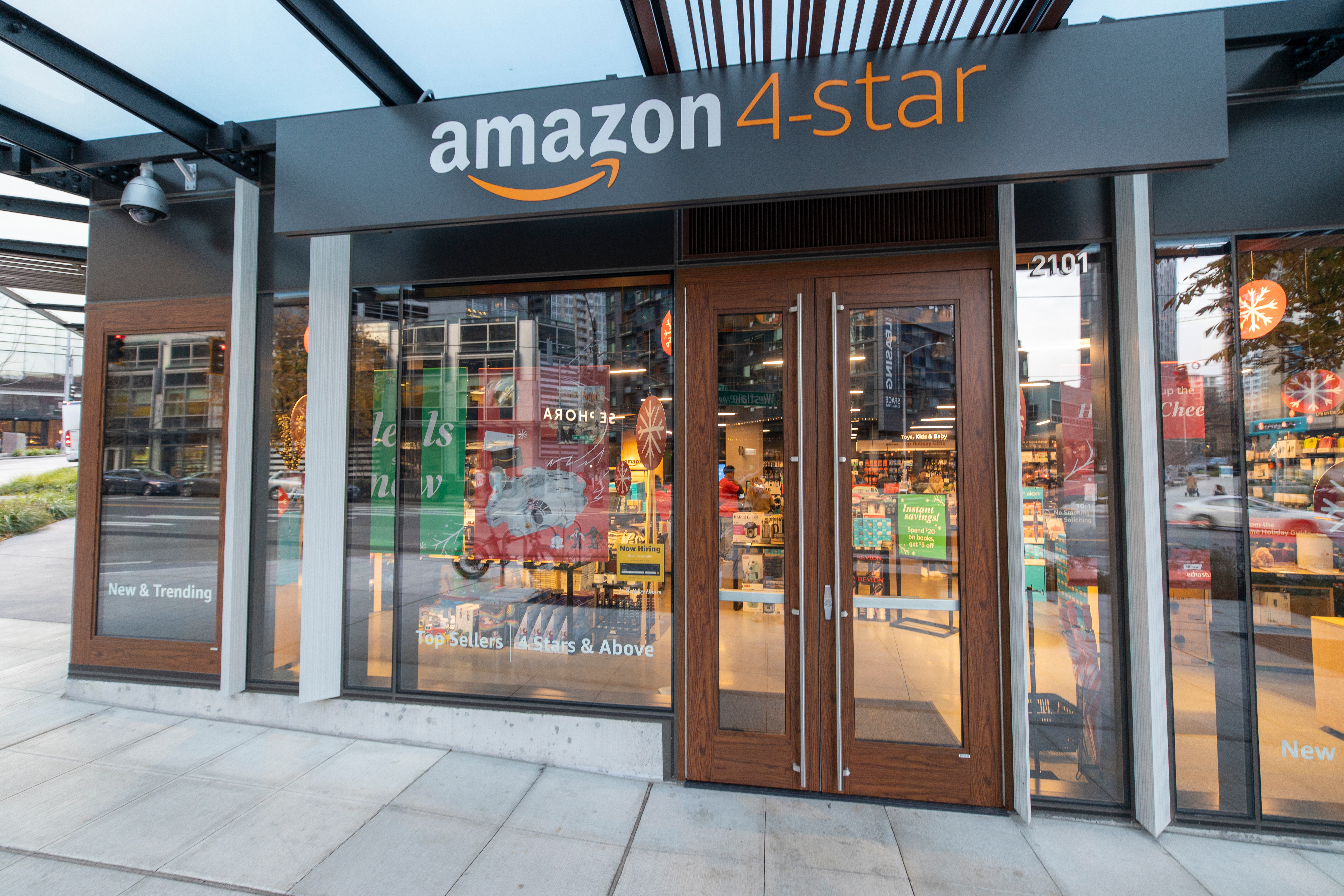Last week, we discussed Amazon’s holiday catalogue, a real life paper manifestation of its omnichannel dominance. This week, we are continuing to explore Amazon’s push into the physical by considering their nascent brick & mortar store, Amazon 4-Star, of which Amazon currently operates twenty-seven in sixteen states, with plans to open five more in the near future.
Offering a unique brand promise and differentiator, Amazon opened its first Amazon 4-Star location in 2018 in Soho, and has continued to open new locations in trendy and upper-middle class neighborhoods across the country.
Always game for some in-field market research, your intrepid blogger ventured to an Amazon 4-Star location in lovely Long Beach, CA to see just what Amazon has fit inside its growing physical footprint. A marvel of omnichannel insight, the 4-Star location tells us a great deal about the current state of retail and Amazon’s plans for the omnichannel future. So let’s put in the retail market research once again as we endeavor to Amazon 4-Star.
Amazon’s 4-Star Differentiator
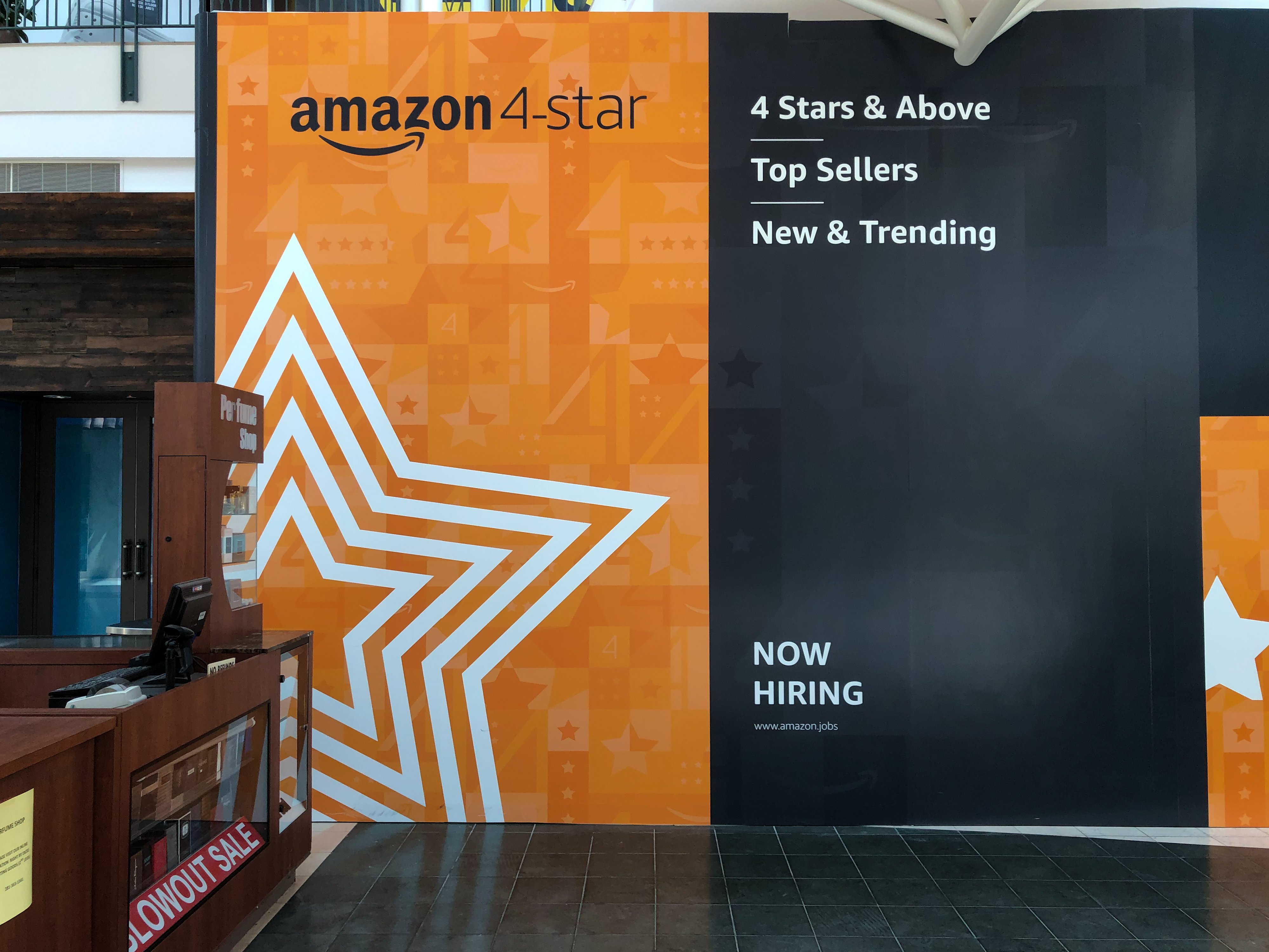
Amazon 4-star, as I was told by a helpful associate upon arrival, does retail a little differently. Every item in the store fits at least one of three criteria: 1) It has been rated 4-stars or above on Amazon; 2) it is trending on Amazon; or 3) it is a current or past best-seller on Amazon.
Obviously, the most notable thing about these criteria is they all hinge on data from the mothership, Amazon’s online marketplace accessed through the website or the app. Essentially, this is the real life version of browsing Amazon’s most popular items, a store full of essentials and extras that Amazon believes (from their extensive market research) consumers want to grab and go.
Ideally, they want this to be a browsing hub, a store that customers check out while at the mall to see a movie or get dinner, and then make a few quick impulse purchases on their way out. COVID-19 has disrupted typical shopping and browsing patterns, obviously, but the instinct remains the same and, like everybody else, Amazon is waiting for the pandemic to recede and for casual browsing to return.
In the meantime, Amazon has a repository of its most popular items just waiting for customers who cannot stand the 1-day delivery turn around, customers who really need that air fryer or a last minute birthday present immediately. The store also gets the tech-phobic and -averse into Amazon’s stream, offering them an analogue way to shop Amazon’s goods. If a customer is unfamiliar with Amazon’s digital marketplace, associates are all too happy to help them find any item unavailable in the store for home delivery.
A Model of Omnichannel Organization
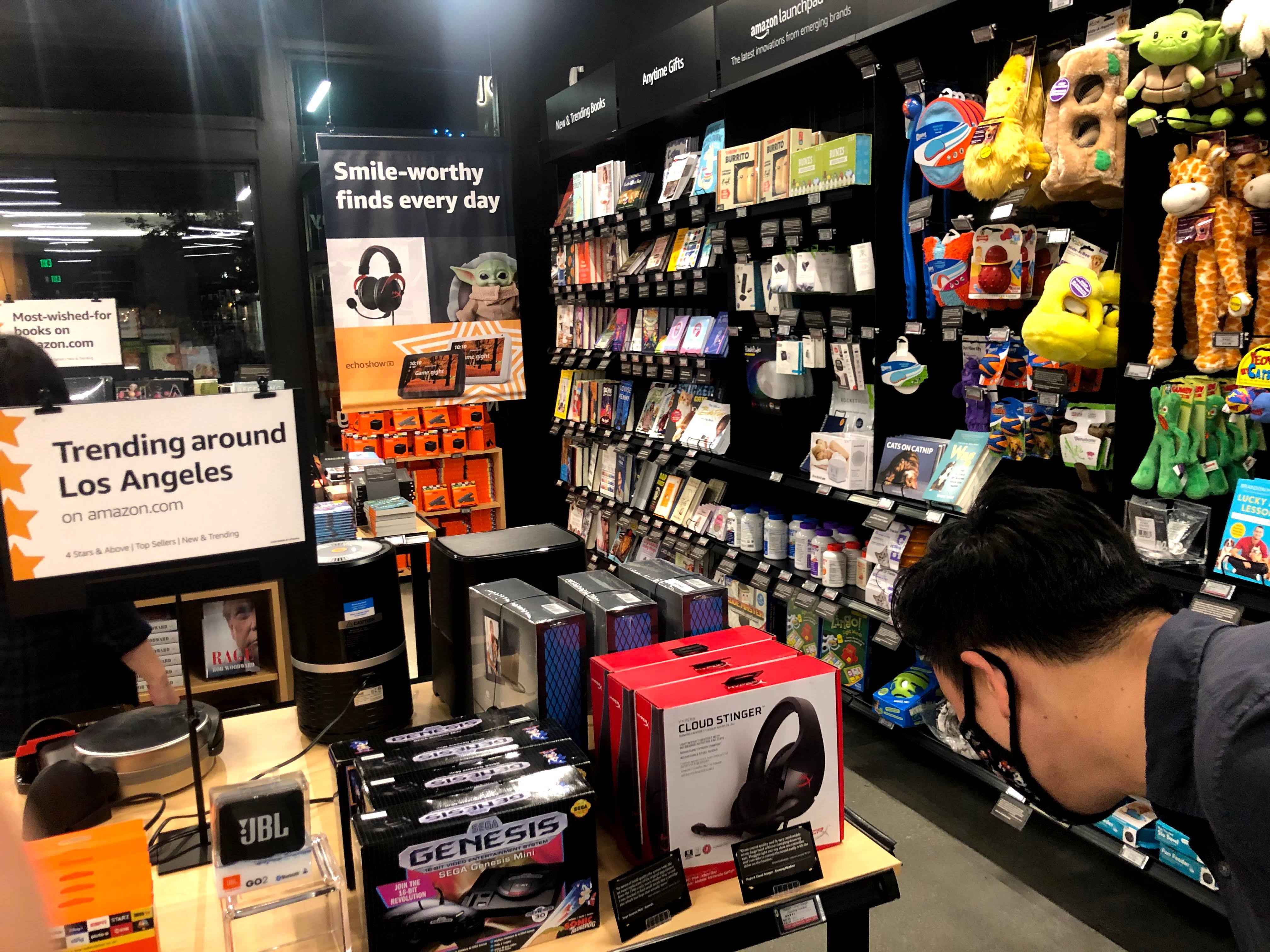
We also need to talk about the store’s organization. Inventory is one thing, but you have to get customers to find what they’re looking for...and then find something else. If sales floor organization is a science (one that requires market research, then Amazon should win a Nobel Prize.
Your humble blogger loves organizing (sometimes I contemplate messing everything up just so I can sort it out again), and Amazon’s spatial organization of their modest square footage is nothing short of inspiring. This store, no more than 4,000 sq/ft, manages to contain a little of everything, and, according to Amazon’s 4-star brand promise, it’s not just a little of everything, it’s the best of everything. From seasonal goods to classic favorites, the store is organized much like a bookstore, with themed displays and end caps fitting into a broader organizational system.
Of course, there is a prominent “Stay in and Play” section dedicated to toys, games, activities, and whatever else it takes to keep children occupied as this at-home period seemingly extends into infinity. Other sections include a “Most Wished For on Amazon.com” section (I, like many Amazon consumers apparently, am now also wishing for that three-tier cookie rack I saw in this section) and “Trending in Los Angeles” (water picks and tortilla presses).
While Amazon has notoriously dumped its leftovers into its Prime Day digital garage sale, nothing in this store feels superfluous. This makes sense: They don’t have the square footage to waste space with something they are just trying to unload. But beyond that, every item in the store feels carefully selected in a process that no doubt involves feeding massive amounts of market research and purchase data into Amazon’s famous algorithms. They aren’t just adding every four-star and trending item, they are making decisions almost daily about what products to include and exclude, which to prominently feature, which to tuck away.
I’m not gonna lie, I was skeptical about the 4-Star concept--as a good market researcher knows, Amazon’s star ratings have long been manipulated, and it felt Amazon was just coating the same old products with a veneer of popularity. Popular, we should always remember, is not the same as good.
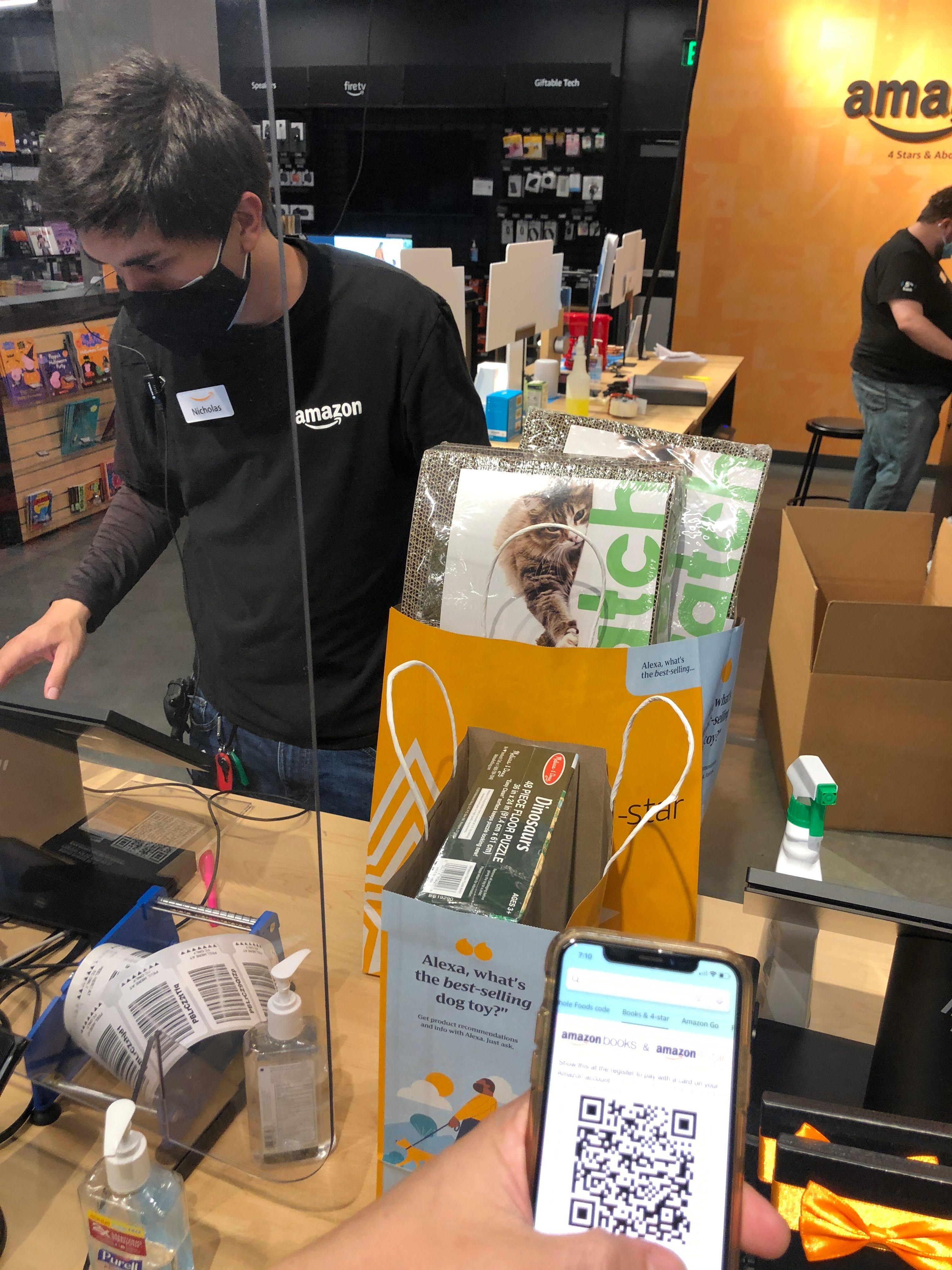
I was wrong. Of the first ten items I spotted in the store, I already owned seven of them: Nintendo Switch, Mario Kart for said Switch, Instant Pot, laptop stand, AmazonBasics iPhone charger, Anker USB keyboard, and a Black + Decker Convection Oven. So, yeah, they clearly have a window into the types of things people want to buy and I am admittedly more of a typical US consumer than I had realized.
It is also worth noting that Amazon devotes a not-so-insignificant portion of this not-too-big store to Amazon devices like Fire TV, Fire Tablet, Kindle, Echo, and Ring. These devices are prominently located near the store’s central hub but were predictably low on foot traffic as consumers scooted by the display towards non-Amazon-branded merchandise. They can’t win ‘em all.
Checking Out into the Future
And then there is the checkout experience.
At checkout, the cashier immediately asked me if I was a Prime member and then prompted me to open the Amazon app and find a code for him to scan (it took three taps and five seconds). Once my code had been scanned, the cashier asked if I wanted to pay using the primary card on my Amazon account, noted the purchase would be immediately reflected on the Amazon app, and that I had received a Prime discount on the cat toy. And that was it. Ten seconds, max.
Now that, dear readers, is an omnichannel experience. No, this store does not have frictionless checkout a-la Amazon Go, and, apart from some search and pricing kiosks, the location is decidedly low-fi (more on that later). But that checkout experience seamlessly blends Amazon’s digital and physical operations, and allows them to maintain individual consumer data across channels.
Retail Market Research: Amazon’s IRL Aspirations Become Clearer
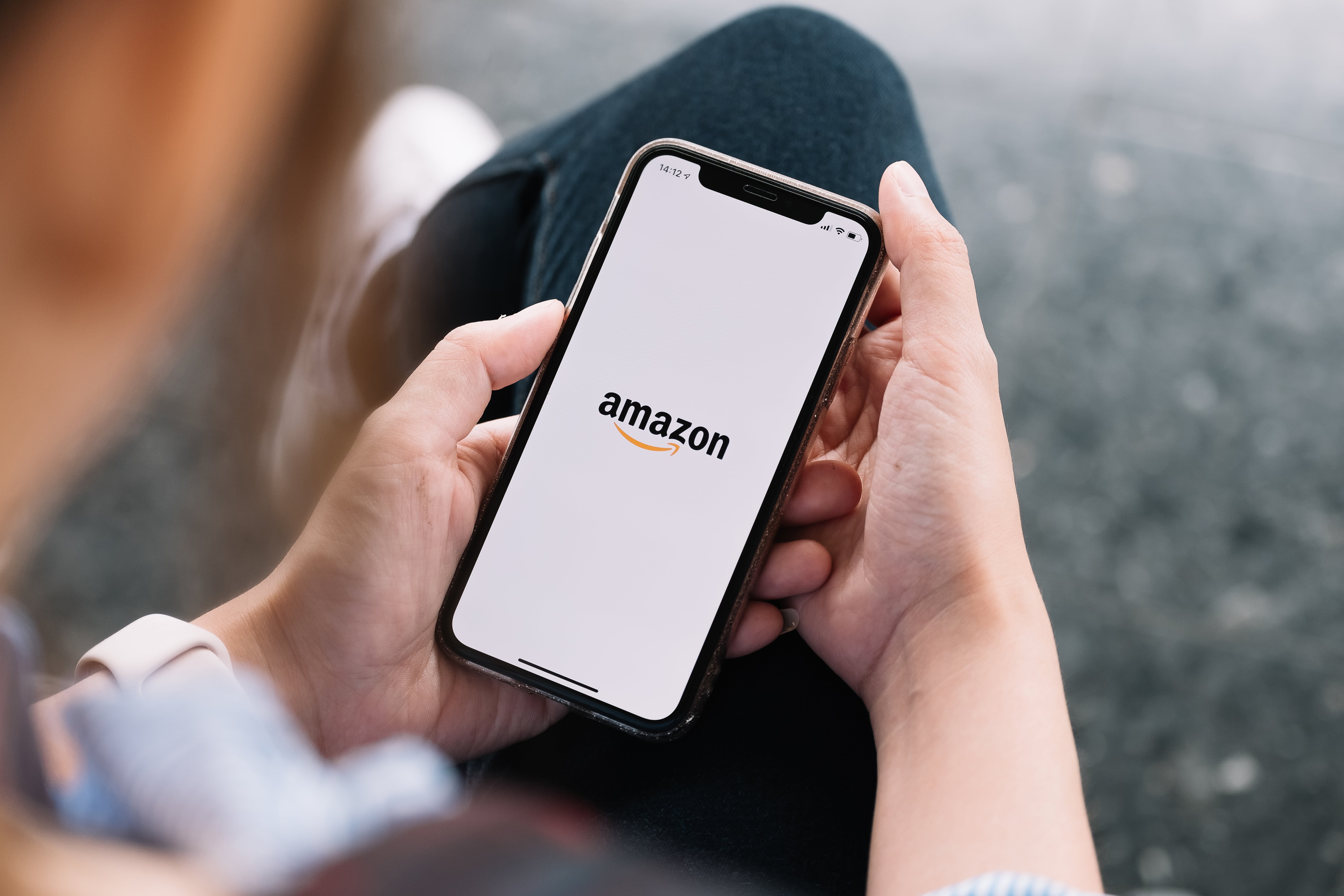
Amazon 4-Star both feeds and is fed by Amazon’s omnichannel might. It gives Amazon’s digital customers a physical presence to engage Amazon’s largely digital operation. Indeed, 4-Star is a touchpoint for customers, even those who will never shop there, as it includes a return center to package and process returned purchases from the website, and there is a pickup locker located across the street.
This has long been a priority for Amazon--giving their digital customers IRL locations to conveniently pick up and return their goods--heck, we even wrote a blog about this a couple of years ago. Back then, they were relying on places like Kohls and 7-Eleven to house these lockers and return centers, but as they expand their physical presence, they can keep these touchpoints in-house.
Amazon 4-Star is not about quickly generating new revenue streams (they are not expanding rapidly enough for that), but rather about making sure they get this omnichannel venture right--that they find the proper balance between their digital might and their growing physical presence. It is just one part of a broader ecosystem built around deep data, logistics, brand synergy, and accessibility. And none of that is possible without market research.
